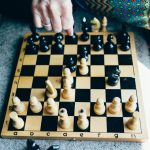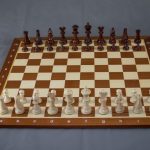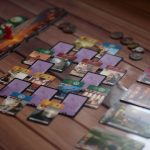Download links
How to install Mastering the Online Bouncing Ball Game APK?
1. Tap the downloaded Mastering the Online Bouncing Ball Game APK file.
2. Touch install.
3. Follow the steps on the screen.
Description
At its core, every game is built upon a set of fundamental principles that dictate how players interact with the environment and each other. Understanding these basics is crucial for anyone looking to excel. The mechanics of the game often include movement controls, objectives, and rules that govern gameplay.
For instance, in a platformer, players typically navigate through levels by jumping, running, and avoiding obstacles. In contrast, a strategy game may require players to manage resources, build structures, and engage in tactical combat. Familiarity with these mechanics not only enhances enjoyment but also lays the groundwork for more advanced strategies.
Moreover, the game’s narrative and thematic elements can significantly influence player engagement. Many games incorporate storylines that provide context for the player’s actions, creating a more immersive experience.
Understanding the game’s setting and objectives can help players make informed decisions during gameplay, whether they are choosing which quests to undertake or which characters to develop. This foundational knowledge is essential for both casual players and those aspiring to compete at higher levels.
Key Takeaways
- Understanding the basics of the game is crucial for beginners to grasp the rules and mechanics.
- Developing strategies for success involves analyzing opponents’ moves and adapting gameplay accordingly.
- Tips for improving hand-eye coordination can include practicing with drills and exercises.
- Mastering advanced techniques requires dedication and patience to perfect complex maneuvers.
- Utilizing power-ups and special moves strategically can give players an edge in competitive gameplay.
- Competing in online tournaments and leaderboards offers a chance to test skills against a wider pool of players and track progress.
Developing Strategies for Success
Once players grasp the basic mechanics and narrative of a game, the next step is to develop effective strategies that can lead to success. This involves analyzing the strengths and weaknesses of both the player and their opponents. For instance, in competitive multiplayer games, understanding the meta—current trends in character selection and gameplay styles—can provide a significant advantage.
Players who adapt their strategies based on the evolving landscape of the game are often more successful than those who rely solely on their initial tactics. Additionally, strategic planning often involves setting short-term and long-term goals. Short-term goals might include mastering a specific skill or achieving a particular score in a single session, while long-term goals could involve ranking up in competitive play or completing all achievements.
By breaking down larger objectives into manageable tasks, players can maintain motivation and track their progress more effectively. This approach not only fosters a sense of accomplishment but also allows for continuous improvement as players refine their skills over time.
Tips for Improving Hand-Eye Coordination

Hand-eye coordination is a critical skill in many games, particularly those that require precise timing and quick reflexes. Improving this coordination can significantly enhance a player’s performance. One effective method is through practice with specific exercises designed to sharpen these skills.
For example, playing rhythm games can help players develop timing and precision as they must hit notes in sync with music. Similarly, action games that require dodging or shooting can train players to react quickly to visual stimuli. In addition to targeted practice, incorporating physical activities that promote hand-eye coordination can be beneficial.
Sports such as tennis or basketball require players to track moving objects while coordinating their movements to catch or hit them. Engaging in these activities not only improves coordination but also enhances overall physical fitness, which can translate into better gaming performance. Furthermore, using tools like reaction time apps or online drills can provide structured ways to measure and improve hand-eye coordination over time.
Mastering Advanced Techniques
| Technique | Success Rate | Time to Master |
|---|---|---|
| Double Exposure Photography | 75% | 3 months |
| Advanced Photoshop Editing | 80% | 4 months |
| High Dynamic Range Imaging (HDRI) | 70% | 5 months |
| Long Exposure Photography | 85% | 2 months |
As players become more comfortable with the basics and develop their strategies, they may seek to master advanced techniques that can set them apart from others. These techniques often require a deeper understanding of game mechanics and may involve complex maneuvers or tactics that are not immediately apparent to novice players. For instance, in fighting games, mastering combo chains can significantly increase damage output and pressure opponents.
Learning how to execute these combos consistently requires practice and an understanding of timing and spacing. Another advanced technique involves utilizing game-specific mechanics to gain an advantage. In many first-person shooters (FPS), players can learn to “strafe” effectively—moving side to side while aiming—to make themselves harder targets while maintaining accuracy.
This technique requires not only good hand-eye coordination but also an understanding of how movement affects shooting mechanics within the game. Players who invest time in mastering such techniques often find themselves performing better in competitive scenarios, as they can outmaneuver opponents and capitalize on openings that less experienced players might miss.
Utilizing Power-Ups and Special Moves
Power-ups and special moves are integral components of many games, providing players with temporary advantages that can turn the tide of battle or enhance gameplay experience. Understanding when and how to use these elements effectively is crucial for maximizing their potential impact. For example, in racing games, power-ups like speed boosts or shields can be strategically deployed at critical moments—such as when overtaking an opponent or defending against an incoming attack.
Timing is everything; using a power-up too early or too late can result in missed opportunities. In addition to timing, players should also consider the context in which they use power-ups or special moves. In team-based games, communication with teammates can enhance the effectiveness of these abilities.
For instance, coordinating a special move with a teammate’s attack can create devastating combos that overwhelm opponents. Furthermore, understanding the cooldown periods for power-ups allows players to plan their actions more effectively, ensuring they have access to these advantages when they are most needed.
Competing in Online Tournaments and Leaderboards

For many players, the ultimate test of skill comes from competing in online tournaments and striving for high rankings on leaderboards. These competitive environments not only provide opportunities for recognition but also foster a sense of community among players who share similar interests. Participating in tournaments often requires preparation beyond just gameplay; players must familiarize themselves with tournament rules, formats, and schedules.
This preparation can include practicing specific strategies tailored to potential opponents or studying past matches to identify trends. Moreover, engaging with online communities can enhance a player’s competitive experience. Forums and social media platforms often host discussions about strategies, character builds, and tournament experiences that can provide valuable insights.
Networking with other players can lead to opportunities for team formation or mentorship, further enhancing one’s skills and competitive edge. As players climb the ranks on leaderboards or achieve success in tournaments, they not only gain personal satisfaction but also contribute to the vibrant ecosystem of competitive gaming that continues to grow globally.
FAQs
What is an online bouncing ball?
An online bouncing ball is a digital simulation of a ball bouncing on a surface, typically created using computer programming and displayed on a screen.
How does an online bouncing ball work?
An online bouncing ball works by simulating the physics of a ball in motion, including factors such as gravity, velocity, and collision with surfaces. The programming code calculates the ball’s position and updates its movement over time to create the bouncing effect.
What are the uses of an online bouncing ball?
An online bouncing ball can be used for various purposes, including educational demonstrations of physics principles, interactive website elements, and entertainment in online games or animations.
Can I interact with an online bouncing ball?
Depending on the specific implementation, some online bouncing ball simulations may allow user interaction, such as adjusting the ball’s initial velocity or angle of bounce. In interactive applications, users may be able to control the ball’s behavior to some extent.
Is an online bouncing ball a realistic representation of physics?
An online bouncing ball can be programmed to closely mimic the behavior of a real bouncing ball, taking into account factors such as gravity, friction, and elasticity. However, the level of realism can vary depending on the complexity of the simulation and the accuracy of the programming.





